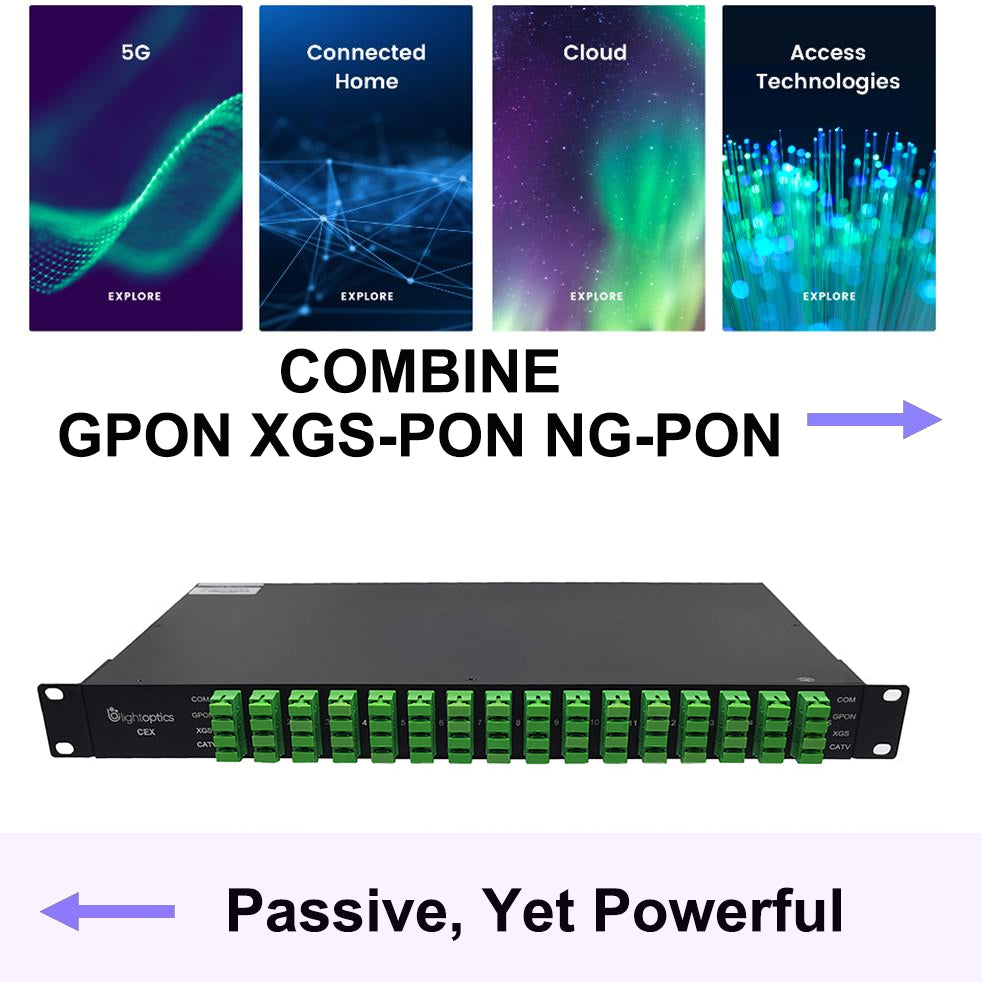Factors to Consider When Choosing the DWDM Mux/Demux
Factors to Consider When Choosing the DWDM Mux/Demux
Line Port
Line port is one of the important ports for each DWDM channel multiplexing and demultiplexing. There are dual fiber and single fiber types of line port, and which to select depends on the use of DWDM wavelengths. As for single-fiber DWDM Mux/Demux, it requires only one single optical fiber to transmit the signals. However, the transmission line can be either unidirectional or bi-directional. Single-fiber unidirectional indicates that optical modules are connected through only one optical fiber and signals can only be sent from the transmitter to the receiver, not in reverse. The advantage of this transmission is that the system is relatively easier to design and more convenient for separate wavelength monitoring. Picture below can be the reference for single-fiber unidirectional transmission.
Single-fiber bi-directional is used to transmit and receive optical signals in two directions at the same time in an optical fiber, just like the positive and negative lanes separated by the separation belt on the road. Vehicles on both sides of the road run in their own lanes without interfering with each other. The advantages are also obvious. Single fiber bidirectional technology can use only one fiber to complete the work that two fibers can do, the existing fiber transmission capacity has been doubled, thus greatly saving fiber resources. Picture below can be the reference for single-fiber bi-directional transmission.
Dual-fiber DWDM Mux/Demux uses two optical fibers, one of which only transmits the optical signal in one direction, while the other transmits the optical signal in the other direction. The advantage is that dual-fiber DWDM Mux/Demux requires two fibers for transmission, each signal is carried by different wavelengths and will not affect each other, the reliability would be higher.
Channel Port
Like line port, channel port is another important port. A DWDM Mux/Demux usually has several channel ports on different wavelengths and each channel port works for a specific wavelength. The channel port of a DWDM Mux Demux is usually ranging from 4 to 96, using the wavelength ranging from 1470nm to 1625nm with a channel spacing of 0.8nm (100GHz) or 0.4nm (50GHz). A DWDM Mux/Demux with more channels offers more capacity, yet the price would be higher as well.
Monitoring Port
Except for the must-have line port and channel port, DWDM Mux/Demux can also be added with other ports such as monitoring port for better network monitoring and management. The monitoring port offers flexible monitoring ways to test the power, wavelength and optical-signal-to-noise ratio (OSNR) of the optical signal without service interruption. Besides, early warning can be provided in time if there is any deviation. Therefore, it can also improve the stability of system transmission. The monitoring port can be either a simplex or duplex fiber port, which depends on the type of DWDM Mux/Demux you are using. The simplex fiber port can monitor only the DWDM, while the duplex fiber port can monitor the entire network.
Active/Passive DWDM Mux/Demux
DWDM Mux/Demux can be divided into active DWDM Mux/Demux and passive DWDM Mux/Demux according to whether the device needs power supply or not. Active DWDM Mux/Demux indicates the device needs power supply.
An active DWDM Mux/Demux includes wavelength adjustable laser, wavelength adjustable filter and wavelength selective amplifier, etc. Active setups grant you more control over your optical network, you can dynamically re-tune wavelengths without dropping connections. Active DWDM Mux/Demuxs are widely used in large capacity optical transmission applications.
"Passive" indicates the DWDM Mux/Demux is an unpowered, pure optical equipment. It requires zero maintenance, upgrades, or electricity to function properly. A passive DWDM Mux/Demux includes dispersion device, interference device, optical coupler and so on. Passive DWDM Mux/Demux is a plug and play system, which is simple and convenient to use. It is mainly applied to the access layer of MAN, campus network, enterprise network and various special industry networks (such as banking, public security, etc.). At present, passive DWDM Mux/Demux is widely used in optical fiber communication solutions.
Conclusion
To improve the efficiency of network transmission, DWDM technology is often deployed in the devices. DWDM Mux/Demux is now recommended as one of the most cost-effective network solutions with expanded fiber capabilities. Hope the above explanation on its working principles and the analysis of different factors can help you make the best choice on the DWDM Mux/Demux for your network.













